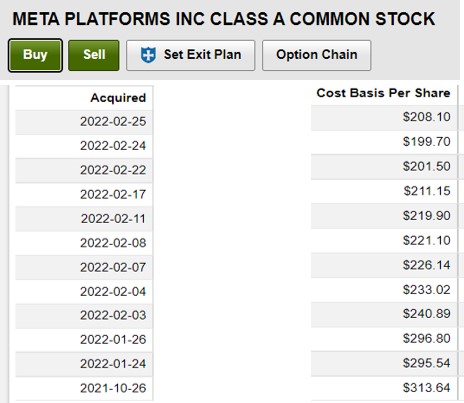Relentless Selling
The bears have been circling for months and have now mauled these markets into a correction. The linchpin was inflation along with an impending rising interest rate environment. The simmering geopolitical tensions between Russia and Ukraine only exacerbated this delicate market and pushed it into a full-blown correction. Over a third of the Nasdaq 100 stocks traded off at least 30% from their highs, over half of the S&P 500 fell 15% or more while the median biotech stock had sold off by 60%. Massive amounts of market capitalization have been eviscerated across the board, with many individual stocks selling off 50% or more throughout this downward spiral.
However, during periods of market-wide corrections, investors can purchase heavily discounted stocks at a fraction of the prices these stocks were trading at just weeks prior. As history indicates, establishing positions during corrections can lead to outsized gains over the intermediate-term as the selling pressure abates and the macroeconomic backdrop resolves. Portfolio balance is key in all market environments and deploying cash during periods of heavily reduced valuations is essential. Cash can be used opportunistically for snapping up heavily discounted stocks of high-quality companies via patience and dollar-cost averaging.

Repurposing Cash
Deploying cash into an environment where the selling is relentless and indiscriminate can be a daunting task. However, for any portfolio structure, especially an options-based portfolio having cash on hand is essential, and these environments is where this cash should be deployed in long equity. This cash position provides investors with flexibility and agility when faced with market corrections. Cash enables investors to be opportunistic and capitalize on stocks that have sold off and have become de-risked. Initiating new positions or dollar-cost averaging during these weak periods are great long-term drivers of portfolio appreciation. Absent of any systemic risk, there's a lot of appealing entry points for many large-cap names. Investors should not be too bearish and ignore this potential buying opportunity because it may not last for long.
Dollar-Cost Averaging
Purchasing stocks at the exact bottom is nearly impossible; however, purchasing stocks at attractive valuations in a disciplined manner over time is possible. Dollar-cost averaging is a great strategy to use when anchoring down into a position with an initial sum of capital and following through with additional incremental purchases as the stock declines further. The net benefit is reducing the average purchase price per share in a sequential fashion (i.e., reducing cost basis). Using Meta Platforms (FB) as an example, initial purchase was made at $313.64, which was 18.5% off its 52-week high. Over the course of the next couple of months, dollar-cost averaging was used to bring the average share down from $313.64 to $278.75, which represents a 27.6% off its 52-week high.

Figure 1 – Dollar-cost averaging performed on Meta Platforms to reduce the initial purchase price from 18.5% off its 52-week high to 27.6% off its 52-week high. These long equity trades, along with options-based trades, can be found via the Trade Notification service
Overly Pessimistic Macroeconomics
The Federal Reserve will begin withdrawing its stimulatory monetary policies and discontinue its asset purchases as telegraphed for months. The Federal Reserve will also increase interest rates over the course of 2022; again, this has been disseminated. As this pivot unfolds, risk appetite towards equities has faltered. Coupled with the geopolitical risk with the Russian/Ukraine conflict, the markets have ostensibly priced in these macroeconomic headwinds. This situation places the Federal Reserve in a precarious situation to combat inflation without derailing the economic expansion while factoring in the geopolitical impacts. Inevitably, rates will increase however the market has priced-in initial rate hikes, albeit the pace and magnitude of rate hikes is unknown. Regardless, this background has been far too pessimistic and negative towards equities.
Conclusion:
The simmering geopolitical tensions between Russia and Ukraine have exacerbated this delicate market and pushed it into a full-blown correction. Over a third of the Nasdaq 100 stocks traded off at least 30% from their highs, over half of the S&P 500 fell 15% or more while the median biotech stock had sold off by 60%. However, during periods of market-wide corrections, investors can purchase heavily discounted stocks at a fraction of the prices these stocks were trading at just weeks prior. Cash can be used opportunistically for snapping up heavily discounted stocks of high-quality companies via patience and dollar-cost averaging.
Purchasing stocks at the exact bottom is nearly impossible; however, purchasing stocks at attractive valuations in a disciplined manner over time is possible. Dollar-cost averaging is a great strategy to use when anchoring down into a position with an initial sum of capital and following through with additional incremental purchases as the stock declines further. The net benefit is reducing the average purchase price per share in a sequential fashion (i.e., reducing cost basis).
Noah Kiedrowski
INO.com Contributor
Disclosure: Stock Options Dad LLC is a Registered Investment Adviser (RIA) firm specializing in options-based services and education. There are no business relationships with any companies mentioned in this article. This article reflects the opinions of the RIA. Any recommendation contained in this article is subject to change at any time. No recommendation is intended to constitute an entire portfolio. The author encourages all investors to conduct their own research and due diligence prior to investing or taking any actions in options trading. Please feel free to comment and provide feedback; the author values all responses. The author is the founder and Managing Member of Stock Options Dad LLC – A Registered Investment Adviser (RIA) firm www.stockoptionsdad.com defining risk, leveraging a minimal amount of capital and maximizing return on investment. For more engaging, short-duration options-based content, visit Stock Options Dad LLC’s YouTube channel. Please direct all inquires to in**@st*************.com. The author holds shares of AAPL, ADBE, AMD, AMZN, ARKK, AXP, BA, BBY, C, CMG, CRM, DIA, DIS, FB, FDX, FXI, GOOGL, GS, HD, HON, INTC, IWM, JPM, MRK, MSFT, NKE, NVDA, PYPL, QQQ, SPY, SQ, TMO, TWTR, UNH, USO, V and WMT.
